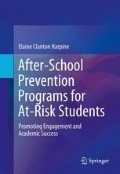Abstract
Every group interacts. It is actually impossible for a group not to interact. Even if a group of students are sitting in a room being totally silent, that is a form of interaction. Interaction involves in?uencing others or being infuenced by others. Silence in a group is infuential. Interaction is like communication in that it is impossible not to communicate. If a student walks into a room and refuses to talk to anyone, that is a form of communication. By refusing to interact and communicate with others, the student is communicating that the student is either shy and unsure of how to make friends, feels superior to other group members, fears group involvement, or has other personal concerns which keep the student from getting involved. Such inability or refusal to interact with others is a form of interaction, even though no words were spoken. The student alters the development of the group when the student fails to interact or participate. Any form of disruption to the development of group process, from shyness to blatant refusal, sti?es constructive interaction
Access this chapter
Tax calculation will be finalised at checkout
Purchases are for personal use only
References
Clanton Harpine, E. (2010a). Erasing failure in the classroom, vol. 1: Camp Sharigan, a ready-to-use group-centered intervention for grades 1–3 (2nd ed.). Aiken, SC: Group-Centered Learning.
Posthuma, B. W. (2002). Small groups in counseling and therapy: Process and leadership (4th ed.). Boston, MA: Allyn and Bacon.
Author information
Authors and Affiliations
Rights and permissions
Copyright information
© 2013 Springer Science+Business Media New York
About this chapter
Cite this chapter
Harpine, E.C. (2013). Interaction in a Year-Long Program. In: After-School Prevention Programs for At-Risk Students. Springer, New York, NY. https://doi.org/10.1007/978-1-4614-7416-6_6
Download citation
DOI: https://doi.org/10.1007/978-1-4614-7416-6_6
Published:
Publisher Name: Springer, New York, NY
Print ISBN: 978-1-4614-7415-9
Online ISBN: 978-1-4614-7416-6
eBook Packages: Behavioral ScienceBehavioral Science and Psychology (R0)

